The current pandemic is revealing something to most people that medical professionals have known for years; masks can be quite painful to wear!
Many masks have a full face seal, which can leave imprints on your face after wearing them for hours at a time. Unless you’re wearing a full helmet and suit like a medical PAPR device, you’re typically going to be wearing a mask that covers your nose and mouth. These masks – whether they’re medical-grade N95s, simple cloth masks, or paper surgical masks – usually one thing in common. They use elastic bands to hook over the ears, which can cause pain and discomfort over time.
This is fine for securing a mask on your face for a few minutes at a time. Under normal circumstances, most people wearing masks aren’t wearing them for hours or entire shifts at a time. Workers exposed to particulates wear them for a few hours, with breaks to take them off. Medical workers wear them for a few minutes or for the duration of surgery, before removing and discarding them. It’s rare that a mask becomes an “every day, all day” accessory. The pandemic is proving that it’s necessary and helpful, though, so here we are.
The trouble is, these elastic bands that wrap around the ears put pressure on those ears, pulling against them. That alone can be painful, but then consider people who wear glasses. The earpieces of the glasses rest in the same place on the ears, and it becomes doubly uncomfortable.
What kinds of solutions are out there? We’ve found five that you might be interested in exploring.
1. Buttons On a Cap
If the straps on a mask hurt after a while, why not move what they hook onto? One of the earliest examples in this pandemic of an alternative is the simple act of sewing buttons onto a cap, do-rag, or other head covering. Here are two examples on Instagram of healthcare workers wearing caps that have buttons sewn onto them to hook to the straps of the mask.

There are a few considerations to this method that you need to be aware of before you try it.
First of all, it requires wearing an additional head covering whenever you’re wearing a mask. This head covering will also need to be removed and washed or sanitized the same way a mask would be, though perhaps not as critically given that you’re not breathing through it. It is still a surface that can be exposed to aerosolized germs, though, so it needs to be washed at the minimum.
Second, the choice of a button you use needs to be sturdy and resilient. A button that’s too small might result in the elastic of the mask popping off of it, which exposes you to environmental contamination and makes the mask less sanitary. In the worst-case scenario, the mask can fly in a way that exposes it and makes it contaminated, forcing you to get a new mask or sanitize your existing mask. This is, obviously, not great.
You also need to make sure that the buttons are sewn in place very strongly, because the elastic of the mask will be exerting constant pressure on the buttons and, more importantly, the thread holding them in place. If they aren’t connected strongly enough, it could rip the button out of the cap, possibly losing the button or tearing the cap in a way that makes it impossible to repair.
Buttons also need to be positioned properly enough that they don’t put too much pressure on the mask. Especially surgical masks, the elastic can only stretch so far, so pulling it too far back might exert enough pressure to cause welts on the face, or even snap the elastic if it’s an older mask that has been re-sanitized several times.
2. The Paperclip Method
Another option is to use the paperclip method to relieve ear strain and still keep a mask tight to the face so it can form a full seal. An example of this is available on Twitter here.
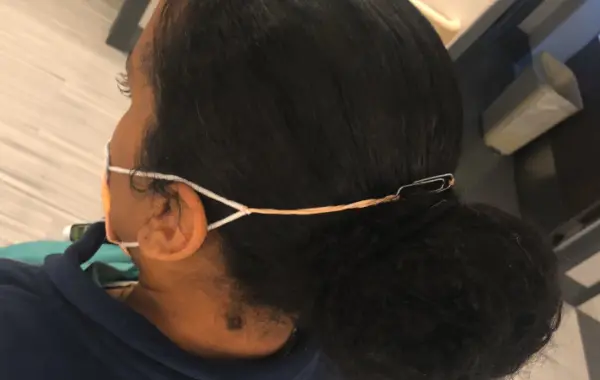
The concept is to extend the elastic of the mask, in this case with rubber bands, though lengths of string can do the same thing. Using a paperclip, you can then attach both sides of the mask to the paperclip at the back of your head. If you don’t want to use a paperclip, plastic devices like this one can work as well.
There are some drawbacks to this method. First of all, it puts a solid plastic or metal piece on the back of your head, at the base of your skull, with constant pressure from the elastic pulling it inwards. This can cause headaches and stress.
Another downside is that, if you have longer hair, something like a paperclip or plastic hook can get tangled up. This makes removing the mask later a painful prospect.
You may also run the risk of your paperclip or plastic hook breaking. A more solid metal chain hook could work instead, but that’s even more likely to be painful when it presses into the back of your head. If you’re using a rubber band or string to connect the elastic of the mask to the clip, that’s also another point of failure, which can break at any moment.
On the other hand, kludging something together with office supplies like paperclips and rubber bands is much easier than rigging up a custom neckband or sewing buttons on a cap. When you’re pressed for time or don’t have the relevant craft skills to create your own solution, buying a box of office supplies, scrounging in the office cupboards or receptionist’s desk, or even just buying a simple plastic piece is much easier.
3. Neck Straps
A third option, and the one that inspired this piece to begin with, is similar to the paperclip-and-rubber-band method above, but with a better design and better construction. You can think of it as a cross between using office supplies and sewing buttons onto a cap.
Around the world, people have been developing neckbands of various designs with the intention of hooking them to a mask. Two primary examples can be produced by two different demographics of craft people, and are thus both popular.
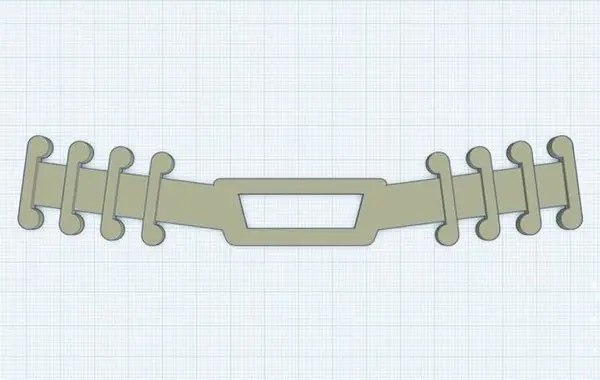
The first option is the knitted, crocheted, or sewn fabric neckband. These tend to be mildly elastic, made out of solid yarn so they’re resilient and strong, and use buttons to secure the mask. They’re essentially just strong strips with buttons on either end and serve the same purpose as the paperclip and band option. You can see a simple example here on Facebook, with links to YouTube demonstration videos and the knitting pattern on Ravelry.
The other option is the 3D printed plastic version. This is tougher and stiffer than fabric, but it can have numerous hooks so it’s more of an adjustable, one-size-fits-all option instead of a fabric option that needs to have the specific length chosen when it’s being made. Hook strips like these are popping up in a variety of different designs, and anyone with a 3D printer and the right modules can print one out for themselves or make a hundred to distribute to healthcare workers.
This option is probably among the best for a halfway point between comfort and effectiveness. Neckstraps like these are strong and resilient, but they’re flexible enough and soft enough that they don’t dig into the back of your head like a paperclip might. Fabric strips are the most comfortable, while plastic strips are easy to produce in bulk with a 3D printer and can be adjustable.
The downsides are largely minimal here. Both options can be fairly resilient against breakage. Fabric can still have buttons pop off if they aren’t secured, and plastic can still dig into the back of your head, but in general, they’re about the best you’re going to get.
4. Hairstyles
Perhaps the ultimate in the do-it-yourself category for securing a mask to your head without using your ears; you can simply use your hair.
No, we’re not talking about tying your hair into knots to hook around the elastic, though that could potentially work so long as it doesn’t pull your hair out. What healthcare workers in China pioneered and what has been picked up throughout the world is the use of small buns and other hairstyles that form “knobs” on the sides of the head, which then serve to hook a mask to.

There are, of course, some drawbacks to this idea. For one thing, if your hair is short or you’re bald, there’s no way to do this. You need long enough hair to make buns with a secure enough base that the mask’s elastic isn’t just going to pull them out.
Second, putting this much pressure on your hair can lead to pain all across your scalp. This can cause headaches, muscle strain, and even hair loss.
Of course, you also run the risk of whatever hair tie your hairstyle you put into your head slipping out of place, and the mask flying off. This is much more likely than a button popping off of a fabric mask tie, so it’s certainly something that can happen.
Whether you use a single bun in the back of your head and a mask with long straps, or a bun on each side of the head with elastic that loops over it like buttons, it’s a limited and makeshift technique. Frankly, this one is only useful if you have no access to any other alternative, and should only be used in the absence of other options.
5. Face Shields
There have been quite a few news stories over the last month or so of makers with 3D printers printing out face shields for healthcare workers, like this one. Consequently, you can find blueprints for your 3D printer pretty much anywhere, be it Thingiverse, UCSF, Stratasys, and elsewhere. They have varying levels of quality, differing designs, and different materials necessary to make them, but they can be made fairly easily if you have the right resources.
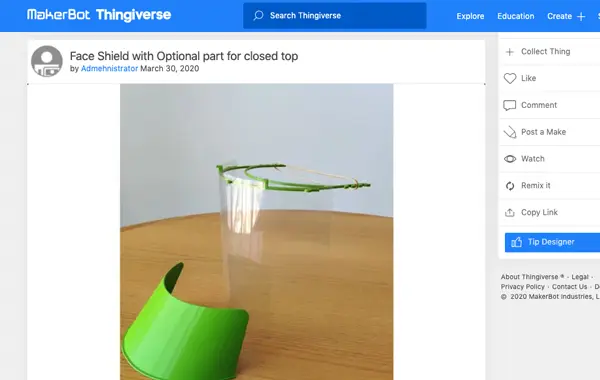
There are a few drawbacks to this, of course. The first and foremost is that a face shield is not a mask. Face shields can protect against directly projected contamination, like someone coughing directly into your face, but they don’t seal or filter the air you breathe in any way at all. Thus, their ability to protect a worker from contamination is limited at best.
As a full head wrapping device, face shields also put pressure around your head, much like wearing a too-tight hat. This can lead to headaches and welts just like wearing masks too much can cause, albeit in a different position.
Face masks can help some people, but they’re less likely to be the kind of thing you mass produce and donate to a hospital. It’s more the kind of mask a grocery store worker might wearwhen they’re already semi-isolated from the people they encounter.
6. Flexible Fabric Loops
Some masks (like the MyAir mask) have flexible stretchy fabric that is much more comfortable than rubber bands or harsher clasps that are found on most masks. If you’re going to be wearing your mask for an extended period of time, these are much easier on your ears than rubber bands.
Fabric, of course, is a bit more expensive than a cheap rubber band found on basic masks, but if this is something you’re going to be wearing for hours (or even days) at a time, it may be well worth it for you to invest in that comfort.
Your Turn
What about you? Have you encountered other kinds of tools or supplies to help secure a mask without hooking it over your ears? We’re interested to see what other designs people are coming up with. It’s a fascinating new world to explore, and it can help keep people safe. Please share your experiences with us in the comments below, we’d greatly appreciate it!

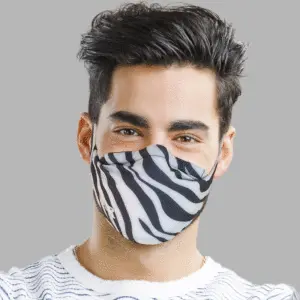
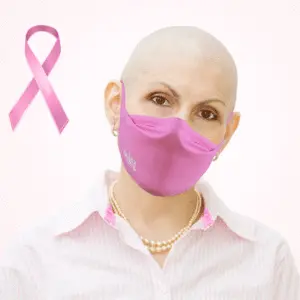

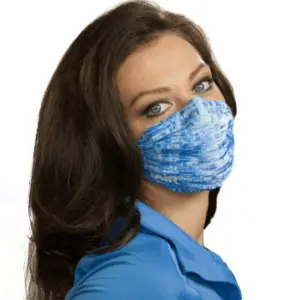
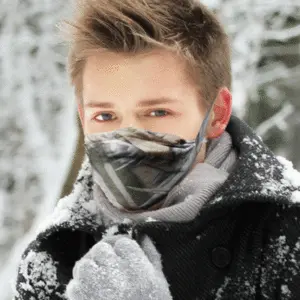
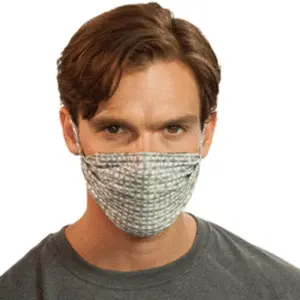
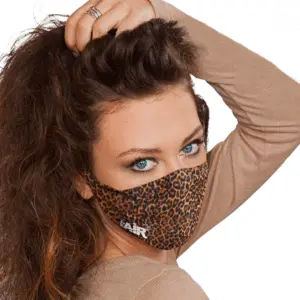
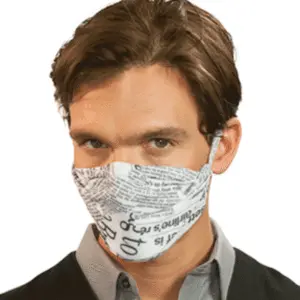



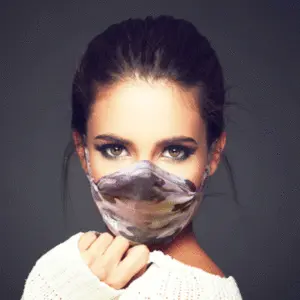

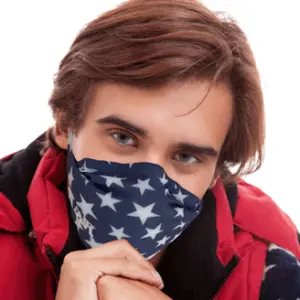

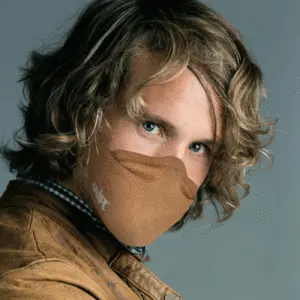


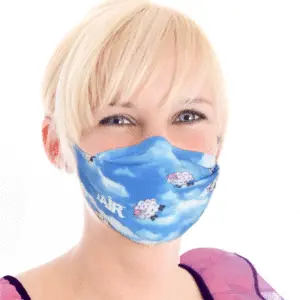
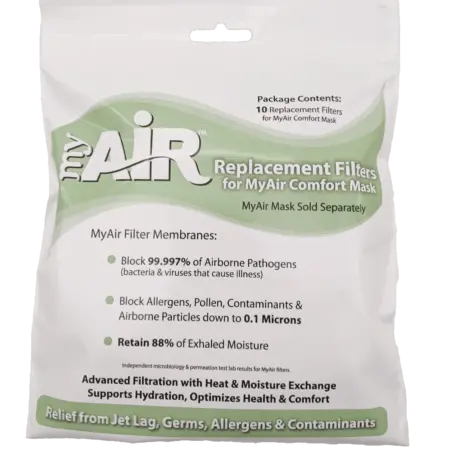
0 Comments